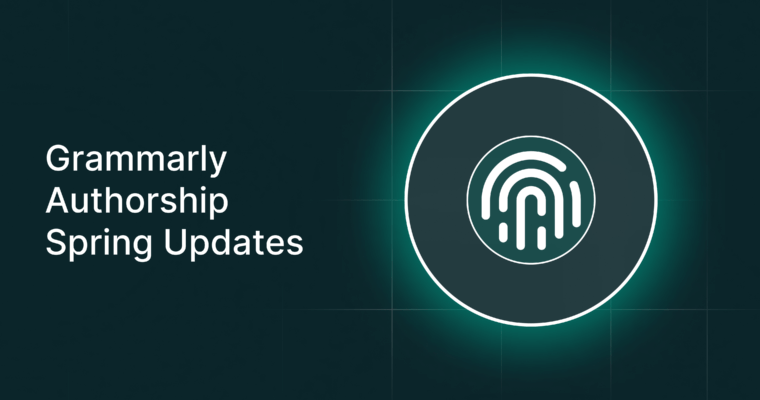
Few things strike more fear in academics than the accursed research paper, a term synonymous with long hours and hard work. Luckily there’s a secret to help you get through them. As long as you know how to write a research paper properly, you’ll find they’re not so bad . . . or at least less painful.
In this guide we concisely explain how to write an academic research paper step by step. We’ll cover areas like how to start a research paper, how to write a research paper outline, how to use citations and evidence, and how to write a conclusion for a research paper.
But before we get into the details, let’s take a look at what a research paper is and how it’s different from other writing.
What is a research paper?
A research paper is a type of academic writing that provides an in-depth analysis, evaluation, or interpretation of a single topic, based on empirical evidence. Research papers are similar to analytical essays, except that research papers emphasize the use of statistical data and preexisting research, along with a strict code for citations.
Research papers are a bedrock of modern science and the most effective way to share information across a wide network. However, most people are familiar with research papers from school; college courses often use them to test a student’s knowledge of a particular area or their research skills in general.
Considering their gravity, research papers favor formal, even bland language that strips the writing of any bias. Researchers state their findings plainly and with corresponding evidence so that other researchers can consequently use the paper in their own research.
Keep in mind that writing a research paper is different from writing a research proposal. Essentially, research proposals are to acquire the funding needed to get the data to write a research paper.
How long should a research paper be?
The length of a research paper depends on the topic or assignment. Typically, research papers run around 4,000–6,000 words, but it’s common to see short papers around 2,000 words or long papers over 10,000 words.
If you’re writing a paper for school, the recommended length should be provided in the assignment. Otherwise, let your topic dictate the length: Complicated topics or extensive research will require more explanation.
How to write a research paper in 9 steps
Below is a step-by-step guide to writing a research paper, catered specifically for students rather than professional researchers. While some steps may not apply to your particular assignment, think of this as more of a general guideline to keep you on track.
1 Understand the assignment
For some of you this goes without saying, but you might be surprised at how many students start a research paper without even reading the assignment guidelines.
So your first step should be to review the assignment and carefully read the writing prompt. Specifically, look for technical requirements such as length, formatting requirements (single- vs. double-spacing, indentations, etc.) and citation style. Also pay attention to the particulars, such as whether or not you need to write an abstract or include a cover page.
Once you understand the assignment, the next steps in how to write a research paper follow the usual writing process, more or less. There are some extra steps involved because research papers have extra rules, but the gist of the writing process is the same.
2 Choose your topic
In open-ended assignments, the student must choose their own topic. While it may seem simple enough, choosing a topic is actually the most important decision you’ll make in writing a research paper, since it determines everything that follows.
Your top priority in how to choose a research paper topic is whether it will provide enough content and substance for an entire research paper. You’ll want to choose a topic with enough data and complexity to enable a rich discussion. However, you also want to avoid general topics and instead stick with topics specific enough that you can cover all the relevant information without cutting too much.
Try not to be robotic about choosing your topic, though; it’s still best to pick something that you’re personally interested in. Ideally, you’ll find a topic that satisfies both requirements, something that provides a suitable amount of content and also keeps you engaged.
3 Gather preliminary research
The sooner you start researching, the better—after all, it’s called a research paper for a reason.
To refine your topic and prepare your thesis statement, find out what research is available for your topic as soon as possible. Early research can help dispel any misconceptions you have about the topic and reveal the best paths and approaches to find more material.
Typically, you can find sources either online or in a library. If you’re searching online, make sure you use credible sources like science journals or academic papers. Some search engines—mentioned below in the Tools and resources section—allow you to browse only accredited sources and academic databases.
Keep in mind the difference between primary and secondary sources as you search. Primary sources are firsthand accounts, like published articles or autobiographies; secondary sources are more removed, like critical reviews or secondhand biographies.
When gathering your research, it’s better to skim sources instead of reading each potential source fully. If a source seems useful, set it aside to give it a full read later. Otherwise, you’ll be stuck poring over sources that you ultimately won’t use, and that time could be better spent finding a worthwhile source.
Sometimes you’re required to submit a literature review, which explains your sources and presents them to an authority for confirmation. Even if no literature review is required, it’s still helpful to compile an early list of potential sources—you’ll be glad you did later.
4 Write a thesis statement
Using what you found in your preliminary research, write a thesis statement that succinctly summarizes what your research paper will be about. This is usually the first sentence in your paper, making it your reader’s introduction to the topic.
A thesis statement is the best answer for how to start a research paper. Aside from preparing your reader, the thesis statement also makes it easier for other researchers to assess whether or not your paper is useful to them for their own research. Likewise, you should read the thesis statements of other research papers to decide how useful they are to you.
A good thesis statement mentions all the important parts of the discussion without disclosing too many of the details. If you’re having trouble putting it into words, try to phrase your topic as a question and then answer it.
For example, if your research paper topic is about separating students with ADHD from other students, you’d first ask yourself, “Does separating students with ADHD improve their learning?” The answer—based on your preliminary research—is a good basis for your thesis statement.
5 Determine supporting evidence
At this stage of how to write an academic research paper, it’s time to knuckle down and do the actual research. Here’s when you go through all the sources you collected earlier and find the specific information you’d like to use in your paper.
Normally, you find your supporting evidence by reading each source and taking notes. Isolate only the information that’s directly relevant to your topic; don’t bog down your paper with tangents or unnecessary context, however interesting they may be. And always write down page numbers, not only for you to find the information later, but also because you’ll need them for your citations.
Aside from highlighting text and writing notes, another common tactic is to use bibliography cards. These are simple index cards with a fact or direct quotation on one side and the bibliographical information (source citation, page numbers, subtopic category) on the other. While bibliography cards are not necessary, some students find them useful for staying organized, especially when it’s time to write an outline.
6 Write a research paper outline
A lot of students want to know how to write a research paper outline. More than informal essays, research papers require a methodical and systematic structure to make sure all issues are addressed, and that makes outlines especially important.
First make a list of all the important categories and subtopics you need to cover—an outline for your outline! Consider all the information you gathered when compiling your supporting evidence and ask yourself what the best way to separate and categorize everything is.
Once you have a list of what you want to talk about, consider the best order to present the information. Which subtopics are related and should go next to each other? Are there any subtopics that don’t make sense if they’re presented out of sequence? If your information is fairly straightforward, feel free to take a chronological approach and present the information in the order it happened.
Because research papers can get complicated, consider breaking your outline into paragraphs. For starters, this helps you stay organized if you have a lot of information to cover. Moreover, it gives you greater control over the flow and direction of the research paper. It’s always better to fix structural problems in the outline phase than later after everything’s already been written.
Don’t forget to include your supporting evidence in the outline as well. Chances are you’ll have a lot you want to include, so putting it in your outline helps prevent some things from falling through the cracks.
7 Write the first draft
Once your outline is finished, it’s time to start actually writing your research paper. This is by far the longest and most involved step, but if you’ve properly prepared your sources and written a thorough outline, everything should run smoothly.
If you don’t know how to write an introduction for a research paper, the beginning can be difficult. That’s why writing your thesis statement beforehand is crucial. Open with your thesis statement and then fill out the rest of your introduction with the secondary information—save the details for the body of your research paper, which comes next.
The body contains the bulk of your research paper. Unlike essays, research papers usually divide the body into sections with separate headers to facilitate browsing and scanning. Use the divisions in your outline as a guide.
Follow along your outline and go paragraph by paragraph. Because this is just the first draft, don’t worry about getting each word perfect. Later you’ll be able to revise and fine-tune your writing, but for now focus simply on saying everything that needs to be said. In other words, it’s OK to make mistakes since you’ll go back later to correct them.
One of the most common problems with writing long works like research papers is connecting paragraphs to each other. The longer your writing is, the harder it is to tie everything together smoothly. Use transition sentences to improve the flow of your paper, especially for the first and last sentences in a paragraph.
Even after the body is written, you still need to know how to write a conclusion for a research paper. Just like an essay conclusion, your research paper conclusion should restate your thesis, reiterate your main evidence, and summarize your findings in a way that’s easy to understand.
Don’t add any new information in your conclusion, but feel free to say your own personal perspective or interpretation if it helps the reader understand the big picture.
8 Cite your sources correctly
Citations are part of what sets research papers apart from more casual nonfiction like personal essays. Citing your sources both validates your data and also links your research paper to the greater scientific community. Because of their importance, citations must follow precise formatting rules . . . problem is, there’s more than one set of rules!
You need to check with the assignment to see which formatting style is required. Typically, academic research papers follow one of two formatting styles for citing sources:
The links above explain the specific formatting guidelines for each style, along with an automatic citation generator to help you get started.
In addition to MLA and APA styles, you occasionally see requirements for CMOS (The Chicago Manual of Style), AMA (American Medical Association) and IEEE (Institute of Electrical and Electronics Engineers).
Citations may seem confusing at first with all their rules and specific information. However, once you get the hang of them, you’ll be able to properly cite your sources without even thinking about it. Keep in mind that each formatting style has specific guidelines for citing just about any kind of source, including photos, websites, speeches, and YouTube videos.
9 Edit and proofread
Last but not least, you want to go through your research paper to correct all the mistakes by proofreading. We recommend going over it twice: once for structural issues such as adding/deleting parts or rearranging paragraphs and once for word choice, grammatical, and spelling mistakes. Doing two different editing sessions helps you focus on one area at a time instead of doing them both at once.
To help you catch everything, here’s a quick checklist to keep in mind while you edit:
Structural edit:
- Is your thesis statement clear and concise?
- Is your paper well-organized, and does it flow from beginning to end with logical transitions?
- Do your ideas follow a logical sequence in each paragraph?
- Have you used concrete details and facts and avoided generalizations?
- Do your arguments support and prove your thesis?
- Have you avoided repetition?
- Are your sources properly cited?
- Have you checked for accidental plagiarism?
Word choice, grammar, and spelling edit:
- Is your language clear and specific?
- Do your sentences flow smoothly and clearly?
- Have you avoided filler words and phrases?
- Have you checked for proper grammar, spelling, and punctuation?
Some people find it useful to read their paper out loud to catch problems they might miss when reading in their head. Another solution is to have someone else read your paper and point out areas for improvement and/or technical mistakes.
Revising is a separate skill from writing, and being good at one doesn’t necessarily make you good at the other. If you want to improve your revision skills, read our guide on self-editing, which includes a more complete checklist and advanced tips on improving your revisions.
Technical issues like grammatical mistakes and misspelled words can be handled effortlessly if you use a spellchecker with your word processor, or even better, a digital writing assistant that also suggests improvements for word choice and tone, like Grammarly (we explain more in the Tools and resources section below).
Tools and resources
If you want to know more about how to write a research paper, or if you want some help with each step, take a look at the tools and resources below.
Google Scholar
This is Google’s own search engine, which is dedicated exclusively to academic papers. It’s a great way to find new research and sources. Plus, it’s free to use.
Zotero
Zotero is a freemium, open-source research manager, a cross between an organizational CMS and a search engine for academic research. With it, you can browse the internet for research sources relevant to your topic and share them easily with colleagues. Also, it automatically generates citations.
FocusWriter
Writing long research papers is always a strain on your attention span. If you have trouble avoiding distractions during those long stretches, FocusWriter might be able to help. FocusWriter is a minimalist word processor that removes all the distracting icons and sticks only to what you type. You’re also free to choose your own customized backgrounds, with other special features like timed alarms, daily goals, and optional typewriter sound effects.
Google Charts
This useful and free tool from Google lets you create simple charts and graphs based on whatever data you input. Charts and graphs are excellent visual aids for expressing numeric data, a perfect complement if you need to explain complicated evidential research.
Grammarly
Grammarly goes way beyond grammar, helping you hone word choice, checking your text for plagiarism, detecting your tone, and more. For foreign-language learners, it can make your English sound more fluent, and even those who speak English as their primary language benefit from Grammarly’s suggestions.
Research paper FAQs
What is a research paper?
A research paper is a piece of academic writing that analyzes, evaluates, or interprets a single topic with empirical evidence and statistical data.
When will I need to write a research paper in college?
Many college courses use research papers to test a student’s knowledge of a particular topic or their research skills in general. While research papers depend on the course or professor, you can expect to write at least a few before graduation.
How do I determine a topic for my research paper?
If the topic is not assigned, try to find a topic that’s general enough to provide ample evidence but specific enough that you’re able to cover all the basics. If possible, choose a topic you’re personally interested in—it makes the work easier.
Where can I conduct research for my paper?
Today most research is conducted either online or in libraries. Some topics might benefit from old periodicals like newspapers or magazines, as well as visual media like documentaries. Museums, parks, and historical monuments can also be useful.
How do I cite sources for a research paper?
The correct formatting for citations depends on which style you’re using, so check the assignment guidelines. Most school research reports use either MLA or APA styles, although there are others.
This article was originally written by Karen Hertzberg in 2017. It’s been updated to include new information.





